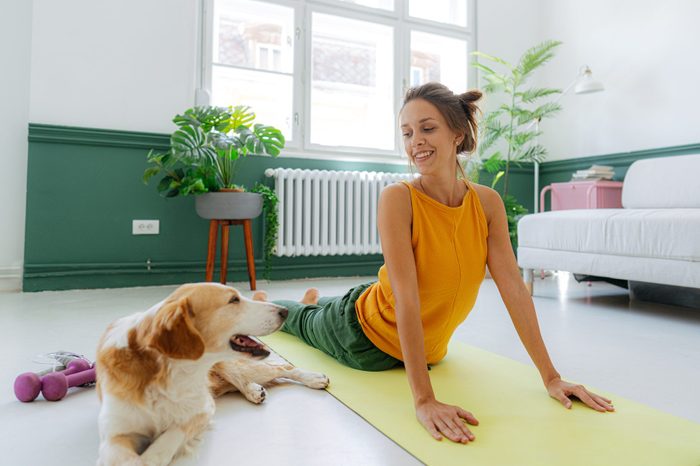
First off, let’s clear up any confusion about flexibility and mobility. They’re both important—and they work together—but they’re not exactly the same thing.
Rick Richey, MS, a master instructor at the National Academy for Sports Medicine, explains that flexibility is about the extensibility of soft tissue (muscles, tendons and ligaments) around a joint; while mobility is about the joint movement itself. It’s worth noting that someone can have flexible muscles—however, if their joints are stiff, they may lack mobility. Flexibility and mobility work together to keep your body strong, stable and active.
“What makes a stretch gentle is how hard (or not hard) you pull on the body part to get the stretch,” explains Linda Magid, a Pilates instructor certified by the Athletics and Fitness Association of America (AFAA). “Many people pull, or push, too hard and cause the limb to shake. That means you are going beyond your stretch ability and might get injured.”
To help manage this, Magid recommends using props such as straps or towels to help you reach your foot, for example, and then get a good grip on it so you don’t slip. “Hold a stretch for over 30 seconds and, if you are feeling comfortable, stretch a little more,” Magid suggests—adding that often, “Flexibility happens after the 30-second mark.”
Do these gentle stretches to make you more flexible regularly, wherever you like. You don’t even need equipment or props.
4 Gentle Mobility Exercises a Trainer Says You Should Be Doing
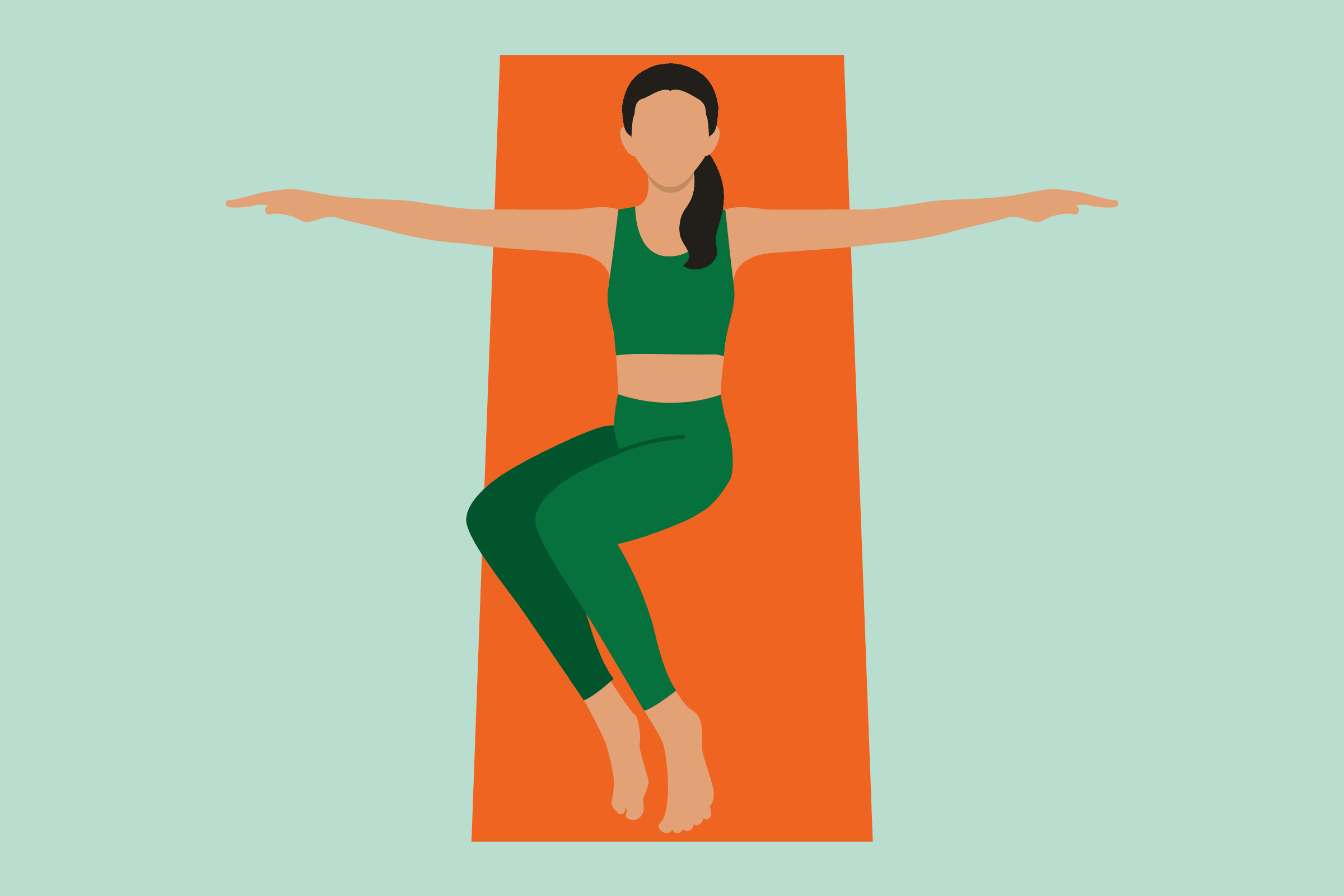
For hip flexors and quadriceps
This stretch is for hip flexors and quadriceps—muscles that can get tight thanks to a lot of sitting—and is extremely gentle. “Lay on your back with your feet on the floor, knees bent, arms in a T, and walk the feet outside your mat, essentially a bit past your hip width,” Magid says. “Drop both knees in one direction. If you drop your knees to the right, then the right leg will rest on the floor while the left leg stretches.”
You don’t want the leg you’re stretching to hang in the air, so if it doesn’t touch, you can put a block under the knee to support it. “Hold for 30 seconds, then gently switch to the other side,” Magid says.
The 5 Best Standing Desks to Keep You from Sitting All Day Long
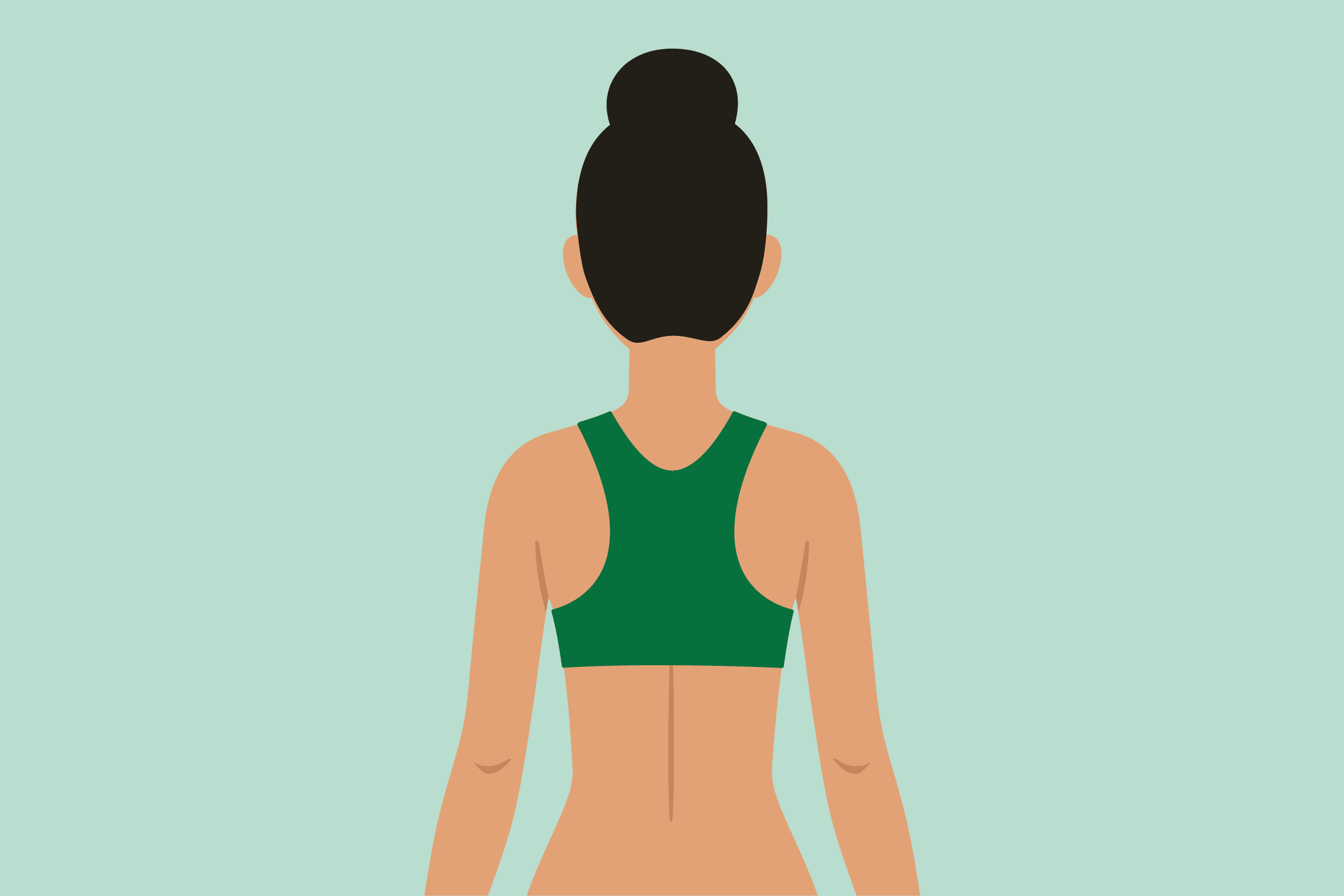
For the shoulders
“If there were one thing you could do for your upper body on a daily basis, it would be shoulder blade circles,” says Brea Johnson, and international yoga instructor and founder of Hearts + Bones Yoga.
The Cleveland Clinic‘s blog highlights that the shoulder is the most flexible joint in the body, which means all of the muscles surrounding it work to create stability. The shoulder has eight main muscles that support and move the shoulder, but 17 muscles attach to the scapula (shoulder blade) that affect not only the shoulders, but also the neck, arms, ribs, and more.
You can do this shoulder flexibility stretch either sitting or standing. “Relax your arms down by your sides and squeeze your shoulder blades towards each other,” Johnson says. “Release, then pull your shoulder blades away from each other.” Johnson suggests repeating this several times and noticing how your shoulder blades feel. “You’ll probably notice some warmth and even tingling sensations as the circulation moves into your shoulder blades,” she says.
“Next, squeeze your shoulder blades together and keep them squeezed as you slide them up toward your neck,” Johnson instructs. “From there, keep shoulder blades up toward your neck, and widen them apart. Stay in the wide position and slide the blades down your back. Squeeze them and keep them squeezed as you slide up your back again. Widen shoulder blades and slide them down again. Repeat a few times and then change directions.”
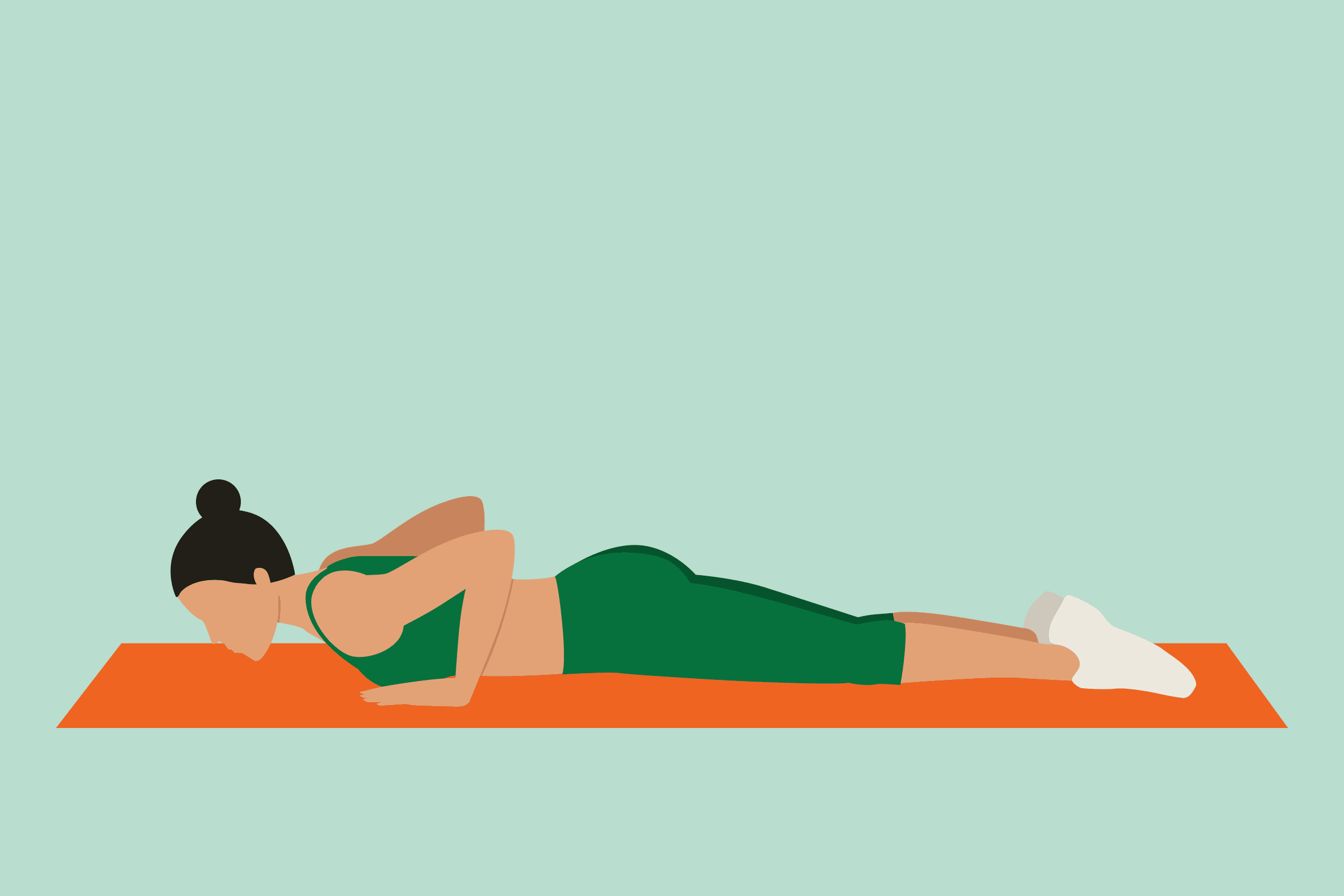
For the spine
Maintaining flexibility in the spine helps reduce risk of injury and increase mobility and range of motion while helping maintain better posture, which will assist you in all your daily activities—everything from unloading groceries to folding laundry to training for a marathon.
Dr. Kevin Lees, D.C., director of chiropractic operations for The Joint Chiropractic, recommends cobra stretch as a gentle exercise to make your spine more flexible. “Lying face down, place your palms flat on the floor under your shoulders,” Dr. Lees says. “Keep your elbows against your sides and lift your torso off the floor, rolling your shoulders back. Your pelvis should remain flat on the floor so your back is arched.”
Dr. Lees recommends holding this for 30 seconds and slowly relaxing before repeating it three more times. While cobra pose is a terrific stretch, this isn’t one you want to overdo—so start slowly.
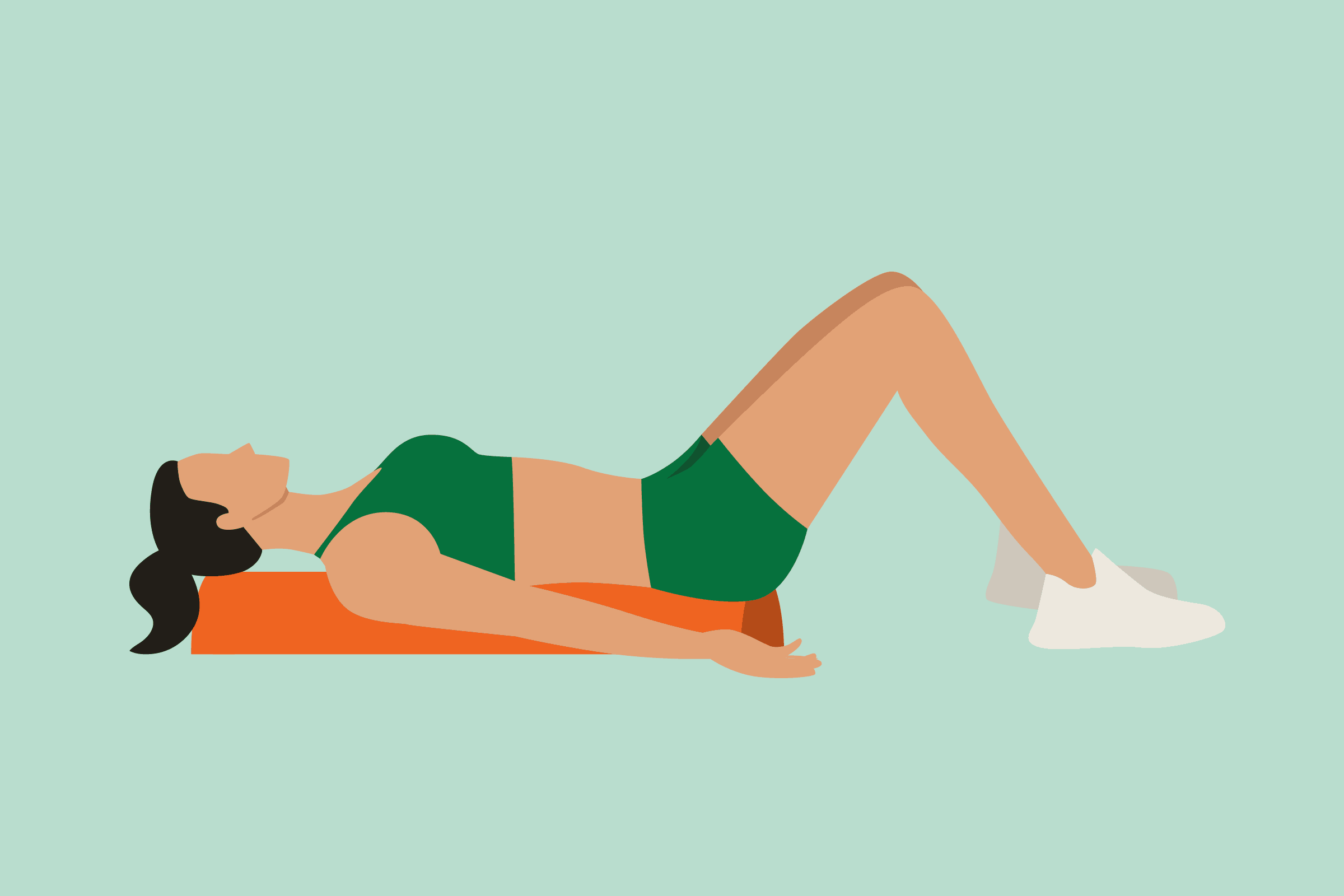
For the chest
If we’re stretching out the spine on the back of the body, we also need to stretch out our chest on the front of the body. Heather Jeffcoat, DPT, a doctor of physical therapy, says we should do this chest opening stretch daily. This stretch is the only one requiring a prop, but this half foam roller will come in handy for other purposes.
“Lie on your back on the roller so that it rests along your spine, bend your knees and keep your feet flat on the ground,” Dr. Jeffcoat says. “Stretch your arms out to the sides so that they make a T.”
If that feels like too much of a stretch across your chest or shoulders, you can lower your hands closer to your hips and build up to the T. “While in this stretch, take six to eight slow, deep breaths,” Dr. Jeffcoat says. “And do this exercise daily.”
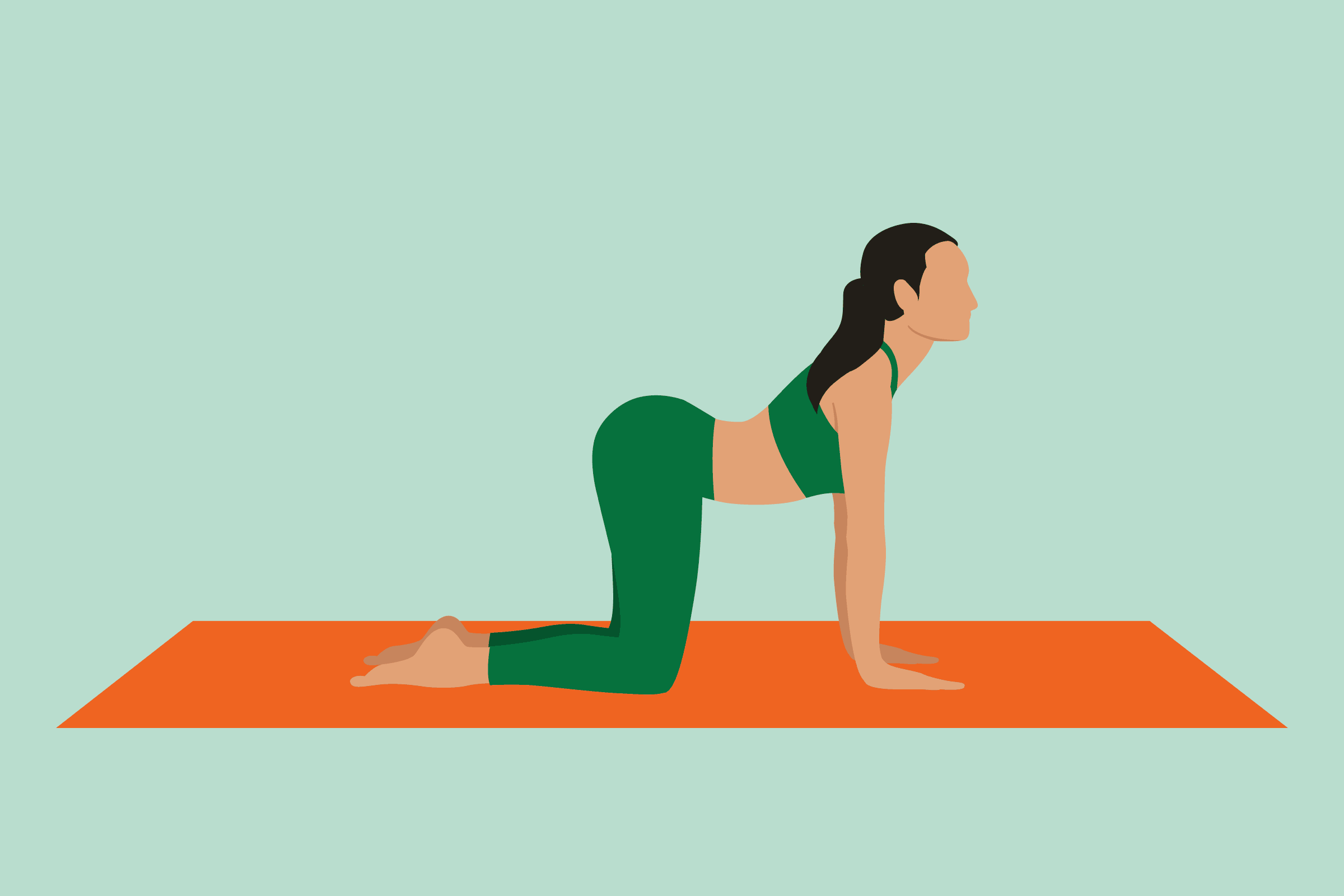
For the core
While strengthening your core can be a major key to long-term, healthy muscular and skeletal fitness, you also want to keep those muscles flexible. Cat-cow is a great way to achieve suppleness in the abdominals to complement core strength.
“Cat-cow stretch helps to increase flexibility in your back and core,” says Kelly Kessler, DPT, a doctor of physical therapy and certified strength and conditioning specialist. “Start on all fours with your wrists under your shoulders and your knees under your hips, inhaling as you arch your spine and lift your head and tailbone towards the ceiling [into] cow pose,” Dr. Kessler explains. “As you exhale, round your spine and tuck your chin towards your chest, [into] cat pose.”
